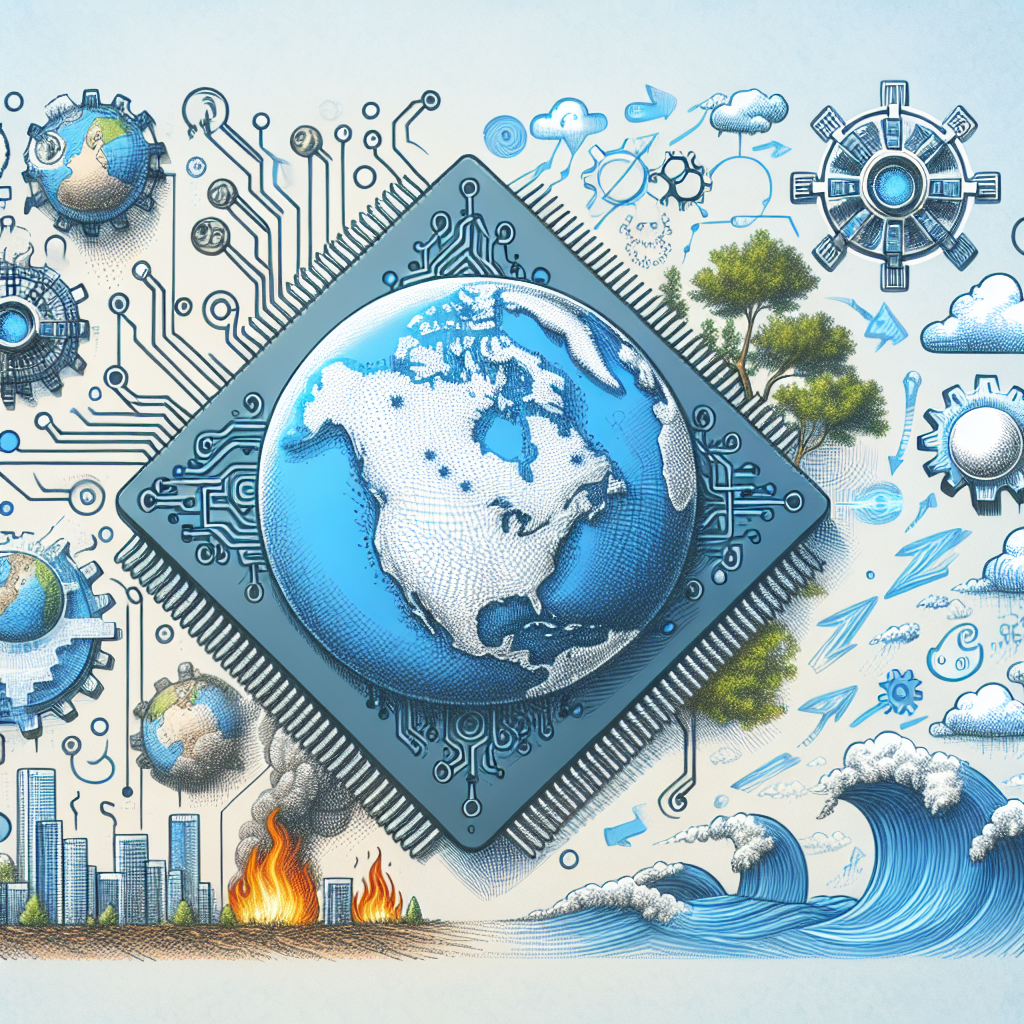Climate change is a pressing global issue that requires immediate action. The impacts of climate change are already being felt around the world, from rising sea levels to extreme weather events. In order to adapt to these changes and mitigate their effects, innovative solutions are needed. One such solution is leveraging artificial intelligence (AI) software to help address the challenges of climate change adaptation.
AI software has the potential to revolutionize the way we approach climate change adaptation. By using advanced algorithms and machine learning techniques, AI can help analyze vast amounts of data and predict future climate trends with greater accuracy. This can enable policymakers, businesses, and individuals to make more informed decisions about how to adapt to a changing climate.
One of the key advantages of using AI software for climate change adaptation is its ability to process large amounts of data in real-time. This can help identify patterns and trends that may not be immediately apparent to human analysts. For example, AI software can analyze satellite data to track changes in land use and deforestation, or monitor weather patterns to predict the likelihood of extreme weather events.
AI software can also help optimize resource allocation and decision-making in response to climate change. For example, AI algorithms can help optimize energy usage in buildings, or improve the efficiency of transportation networks to reduce greenhouse gas emissions. By automating these processes, AI software can help reduce costs and improve the effectiveness of climate change adaptation strategies.
Another key benefit of leveraging AI software for climate change adaptation is its ability to facilitate collaboration and knowledge sharing. By using AI-powered platforms, stakeholders from different sectors can share data, models, and best practices to develop more effective adaptation strategies. This can help break down silos and foster greater cooperation in addressing the challenges of climate change.
However, it is important to recognize that AI software is not a panacea for climate change adaptation. There are still limitations to its capabilities, and ethical considerations that must be taken into account. For example, AI algorithms can be biased or inaccurate if not properly trained or validated. In addition, there are concerns about data privacy and security when using AI software to collect and analyze sensitive information.
To address these challenges, it is important to develop robust governance frameworks and standards for the use of AI software in climate change adaptation. This includes ensuring transparency and accountability in the development and deployment of AI algorithms, as well as protecting the rights and interests of individuals and communities affected by climate change.
In conclusion, leveraging AI software for climate change adaptation has the potential to revolutionize how we address the challenges of a changing climate. By harnessing the power of AI algorithms and machine learning techniques, we can improve the accuracy and efficiency of adaptation strategies, enhance collaboration and knowledge sharing, and ultimately build a more resilient and sustainable future.
FAQs:
Q: What are some examples of AI software being used for climate change adaptation?
A: There are several examples of AI software being used for climate change adaptation. For example, AI algorithms are being used to analyze satellite data to track changes in land use and deforestation, monitor weather patterns to predict extreme weather events, and optimize energy usage in buildings to reduce greenhouse gas emissions.
Q: How can AI software help improve collaboration and knowledge sharing in climate change adaptation?
A: AI-powered platforms can help facilitate collaboration and knowledge sharing among stakeholders from different sectors. By enabling the sharing of data, models, and best practices, AI software can help break down silos and foster greater cooperation in addressing the challenges of climate change.
Q: What are some of the limitations and challenges of using AI software for climate change adaptation?
A: There are several limitations and challenges to using AI software for climate change adaptation. For example, AI algorithms can be biased or inaccurate if not properly trained or validated. There are also concerns about data privacy and security when using AI software to collect and analyze sensitive information.
Q: How can governance frameworks and standards help address the challenges of using AI software for climate change adaptation?
A: Developing robust governance frameworks and standards can help address the challenges of using AI software for climate change adaptation. This includes ensuring transparency and accountability in the development and deployment of AI algorithms, as well as protecting the rights and interests of individuals and communities affected by climate change.

